Summer is a refreshing time to add a healthy dose of fresh herbs to your salads, smoothies, and other entrees for an instant burst of flavor. But it’s not the only time you can take advantage of fresh herbs in the kitchen — the best herbs for cooking can be used year-round.
If you’ve only ever cooked with dried herbs, it can be intimidating to learn how to cook with fresh herbs. From preparing and cooking to storing and preserving, we’re breaking down how to use the best herbs for cooking — plus, tips for substituting dried herbs for fresh (and vice versa).
Dried vs. Fresh Herbs: What’s the Difference?
Before we start, let’s outline some of the primary differences between dried and fresh cooking herbs.
Health Benefits:
While herbs can be used in their extracted and dried forms, the most significant health benefits are often found in the raw plant. These include:
- Lowering blood pressure and heart disease. Using fresh herbs as an alternative to salt for flavoring your favorite foods can help lower blood pressure and keep heart disease away.
- Improving mineral balance. Parsley is just one example of a mineral-rich herb, offering high levels of fiber, vitamin C, folate, and calcium. Other herbs are superior sources of vitamins and minerals, as well.
- Increasing immune support. Fresh herbs like rosemary, ginger, thyme, and sage are all known for helping the body fight off infections.
As with many natural foods, some of the more beneficial and nutritional components are lost during the drying process.
Flavor:
Dried herbs tend to have a strong flavor, while fresh herbs are usually quite mild. (Hence, why restaurants and chefs garnish plates with fresh herbs and not dried.) If you’re looking to substitute fresh for dry in a recipe, you’ll need 3-4 times the amount of fresh herbs to achieve the same flavor.
The rule of thumb for fresh-to-dried conversions is this: 1 tablespoon of fresh herbs = 1 teaspoon of dried herbs.
Cooking Time:
You should also take into consideration your cooking method and the total cooking time of your dish. Fresh herbs taste brightest when added to raw dishes and recipes with shorter cooking times. That freshness is lost in recipes with cooking times of longer than 10 – 15 minutes.
In contrast, dried herbs are best suited for dishes with long cooking times. As they steep in soups, stews, or other sauces, their flavors intensify, adding extra flavor and depth.
Shelf-Life:
Like most produce items, the shelf-life of fresh herbs is much shorter than dried ones. Dried herbs can maintain their flavor for up to a year (sometimes more, sometimes less depending on the kind of herb) in your pantry. When stored properly, fresh herbs can last anywhere from 2 – 3 weeks in the fridge.
10 Fresh Cooking Herbs & How To Use Them
If you haven’t cooked with fresh herbs previously, the first step is learning what kind of flavor they add. Below, we’ve outlined 10 of the best herbs for cooking, what foods they pair well with, and how to use them to transform your dish’s flavor.
1. Basil
Commonly used in Italian and Mediterranean cuisines, basil is described as a fragrant and herbaceous herb. Though it belongs to the mint family, its taste is much earthier and peppery, with hints of sweetness.
Fresh basil leaves can be used as a garnish to many dishes, such as Margherita pizza or Caprese salad, to add a delicious balance of color and flavor. If you’re looking to use fresh basil in your cooking, however, the best advice is to add it towards the end of the process. Remember, even the best fresh herbs for cooking lose most of their flavor if cooked for more than 10 – 15 minutes.
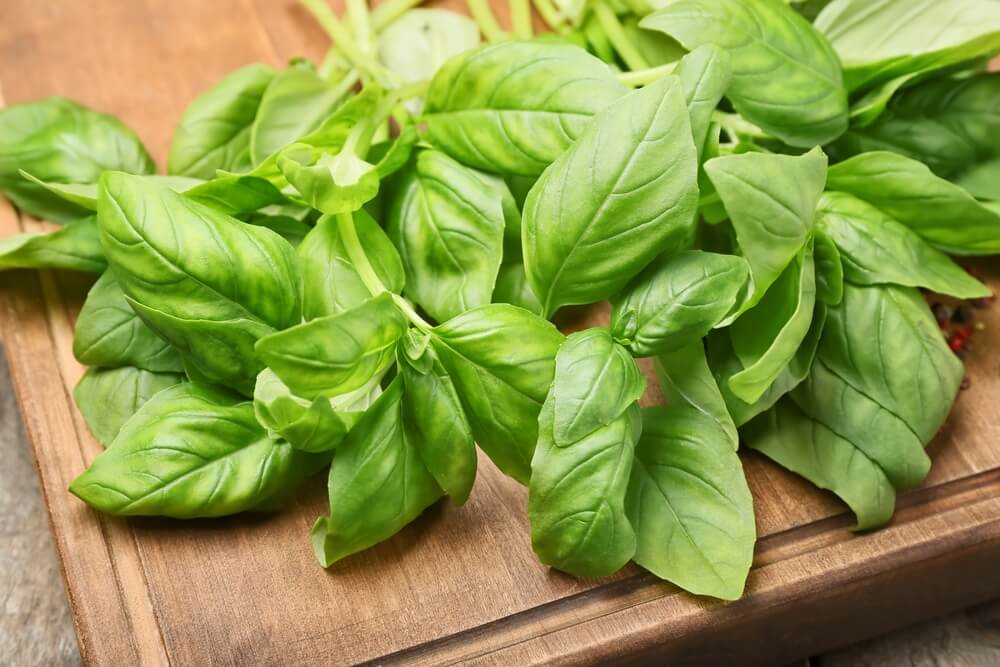
- Flavors: Slightly sweet and peppery.
- Preparation: The best taste lives in the leaves. Remove the leaves from the stem and thinly slice or keep them whole. To prevent browning and to maximize flavor, add at the end of cooking or simply use a garnish.
- Tastes best in:
- Summer tomatoes and mozzarella cheese
- Tomato sauce
- Pesto
2. Cilantro
Cilantro, which comes from the leaves of the coriander plant, is a popular herb in Mexican, Asian, Middle Eastern, and Indian cuisines. Despite its popularity, cilantro is quite the controversial herb. To some, it tastes bright and citrusy with hints of pepper. But those with the “cilantro soap gene” have a very different palette experience.
Like basil, the most common way to prepare cilantro is to remove the leaves from the stems; although, some people suggest that the stems carry even more flavor than the leaves. So next time you try making some fresh guacamole or an Indian curry, don’t throw out those stems!
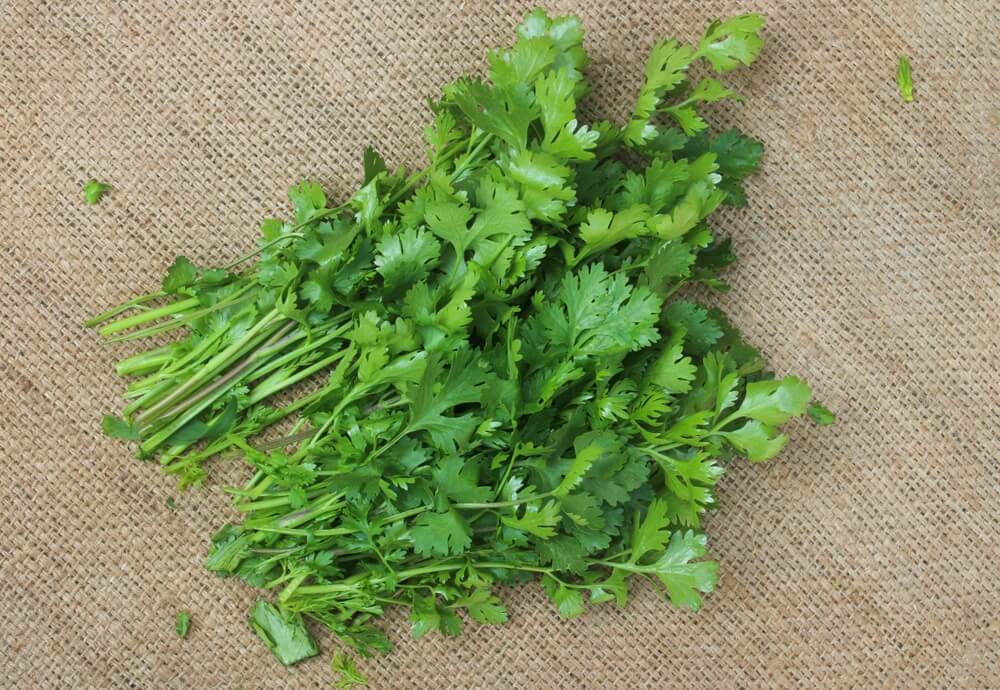
- Flavors: Bright, zesty lemon.
- Preparation: Thinly chop the leaves and stems, or remove the leaves from the stems and keep them whole.
- Tastes best in:
- Salsa and guacamole
- Pho and Pad Thai
- Green salads
3. Rosemary
Known for its needle-like leaves and evergreen aroma, rosemary is one of the most versatile and flavorful herbs. Its flavor is complex, with a mild sweetness and savory piney flavor that lends its flavors well to savory and sweet dishes.
Unlike other herbs, fresh rosemary is one of the best herbs for cooking because its flavor holds up well in dishes with longer cooking times. With that said, use it sparingly — rosemary can quickly overpower a dish with its pungent flavor.
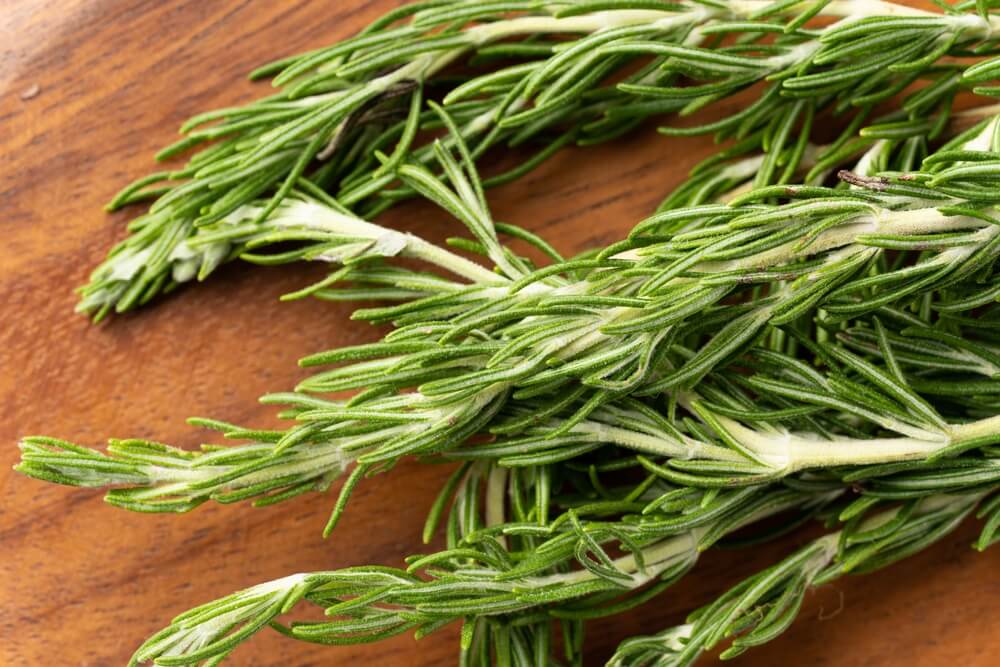
- Flavors: Earthy and woodsy, with notes of lemon and pine.
- Preparation: Strip the leaves from the stem. Thinly chop the leaves or leave them whole.
- Tastes best in:
- Pork tenderloin or any roasted meat
- Roasted potatoes
- Focaccia bread
4. Thyme
If you’re looking for another fresh cooking herb that holds up in dishes with longer cooking times, thyme is another great option. It’s milder than rosemary but still adds a complex, herbaceous flavor to any meal.
Many French and Mediterranean dishes use whole thyme sprigs to infuse flavor and balance out the richness of hearty soups, sauces, and fatty meats. If using the full sprigs, however, be sure to remove them before serving. The stems aren’t toxic, but they are tough to chew.
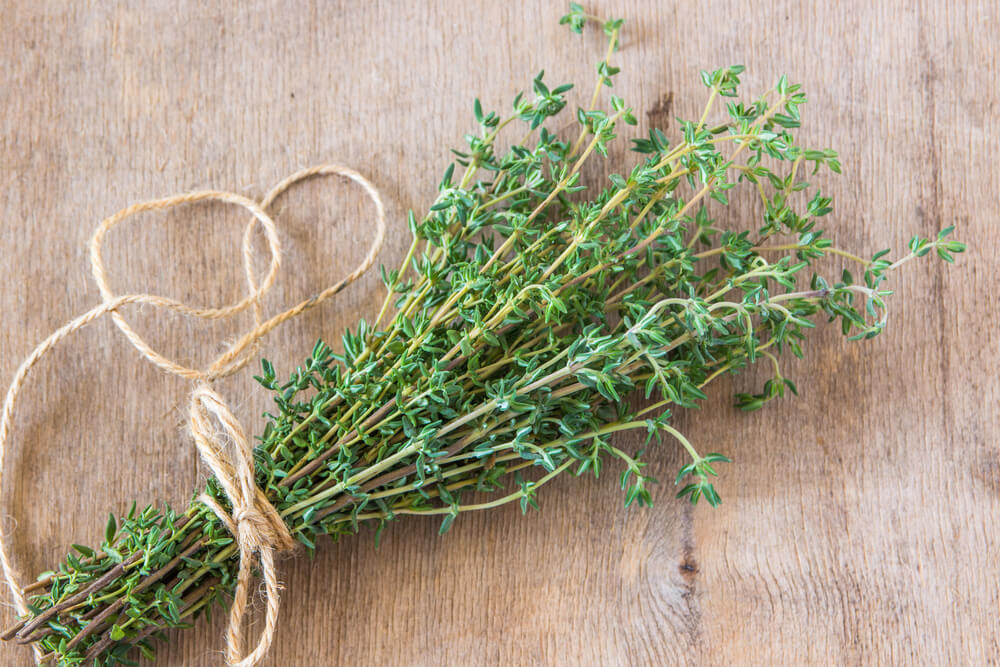
- Flavors: Floral and earthy, with undertones of lemon and mint.
- Preparation: Bundle some sprigs together with kitchen twine to use whole, or strip the leaves from the stem and chop before use.
- Tastes best in:
- Roast chicken and other meats
- French onion soup
- Rice
5. Mint
Mint’s flavor is best described as cool and fresh. We’ve used it to describe the flavor of some of the fresh cooking herbs above because it’s so distinct and recognizable. Though it’s mostly used in sweet dishes like ice cream or teas, it can also help balance the heat of spicy foods like Indian curry.
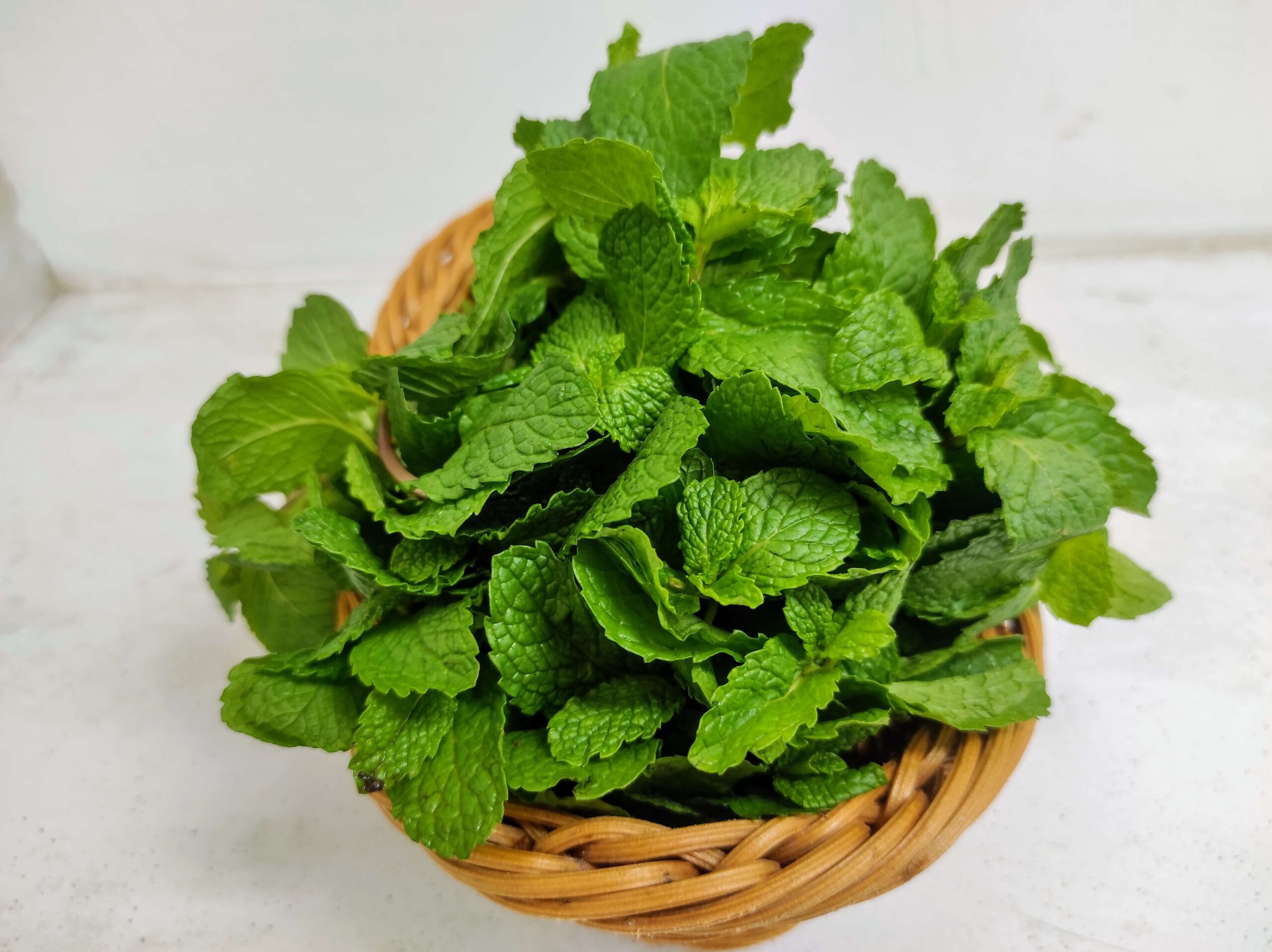
- Flavors: Sweet, cool, evergreen.
- Preparation: Keep the leaves whole or tear and chop them before using.
- Tastes best in:
- Salads — especially those with cucumbers and tomatoes
- Cocktails (like fresh mojitos)
- Curry sauce
6. Oregano
Oregano is another one of the best herbs for cooking because it retains much of its flavor throughout the entire cooking process. As a close relative of the mint family, this herb’s pungent flavor can be described as earthy and almost bitter, with underlying notes of mint.
Since dried oregano retains just as much flavor as fresh, it may be more economical to keep your pantry stocked with the dried version instead of splurging on fresh.
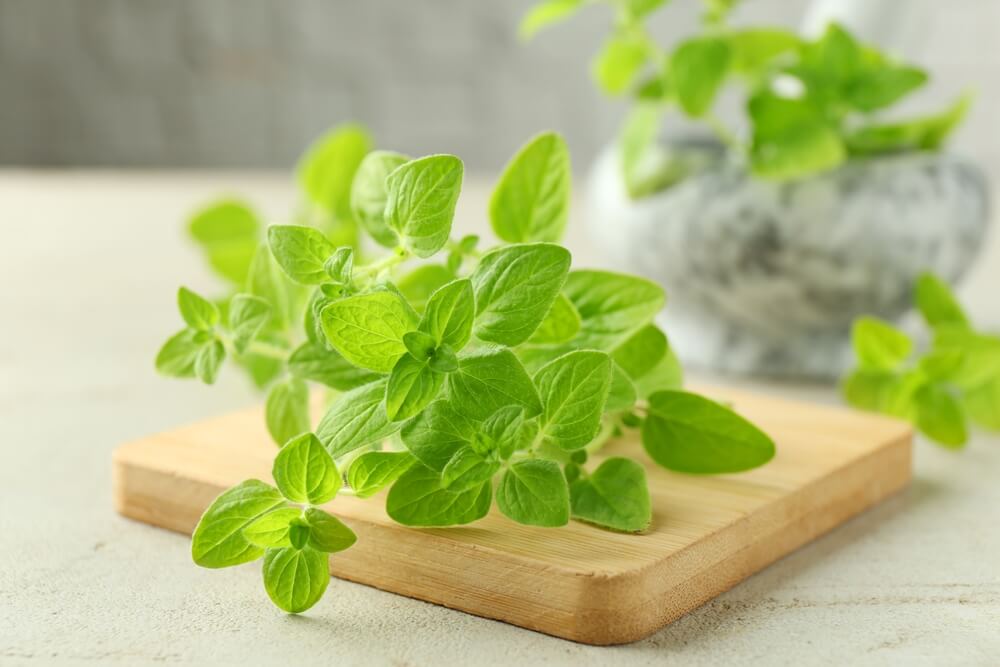
- Flavors: Herby and peppery with undertones of mint.
- Preparation: Thinly chop the leaves or keep them whole.
- Tastes best in:
- Tomato sauce
- Pizza
- Salad dressings
7. Dill
Fresh dill, which is known for its distinct grassy and feathery look, is found in recipes common to Mediterranean, Russian, and Central American cultures. Its flavor is best described as slightly sweet and tangy. It adds a deliciously bright and crisp flavor to salad dressings, fish, and, of course, crunchy pickles!
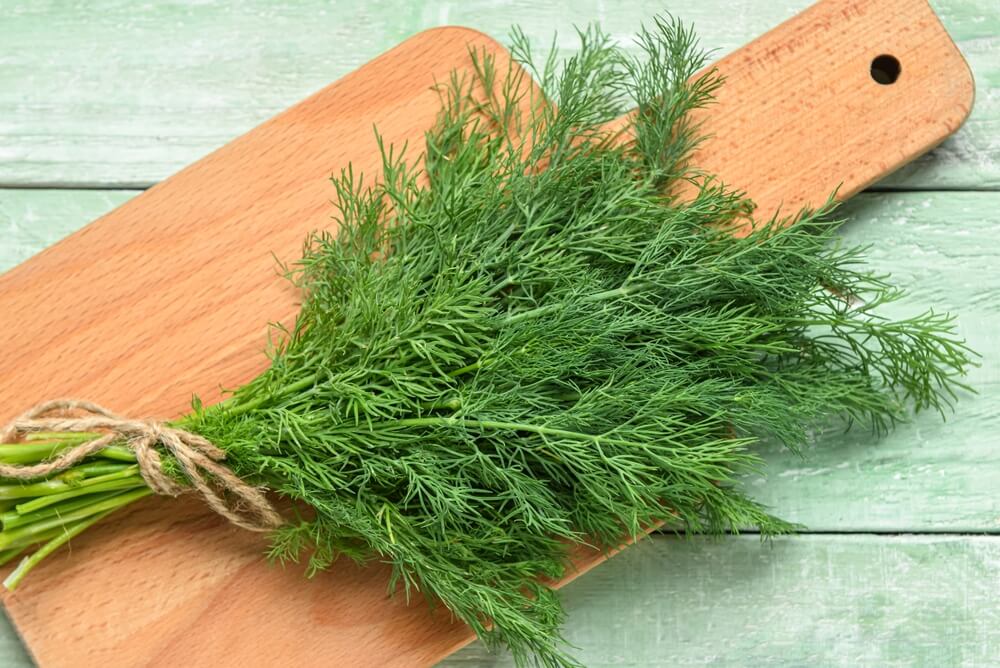
- Flavors: Tangy, crisp, and lemony.
- Preparation: Strip the leaves from stems and use whole or chop.
- Tastes best in:
- Creamy dips — like tzatziki
- Potato salad
- Salmon cakes
8. Parsley
Fresh, bright, peppery, and slightly bitter — these are some of the most common ways to describe the taste of fresh parsley. It’s an herb most popularly used as a garnish to finish off a variety of dishes with a fresh, herby kick.
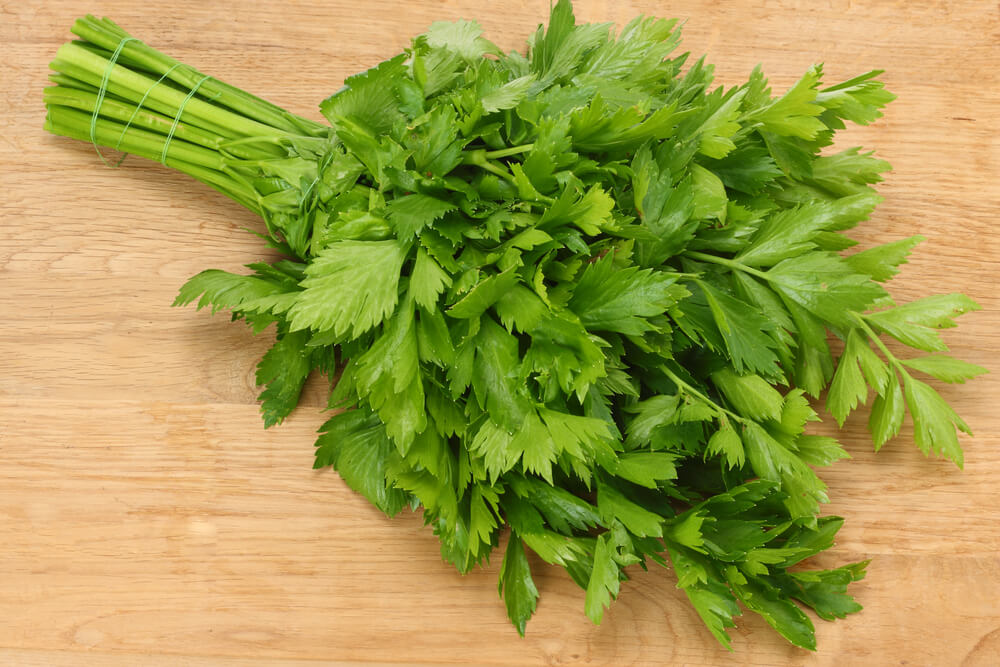
- Flavors: Bright, lemony, and slightly bitter, with a peppery aftertaste.
- Preparation: Remove the leaves from the stems. Keep whole or thinly sliced for a more subtle flavor.
- Tastes best in:
- Pasta garnish
- Sautéed mushrooms
- Meatballs
9. Chives
Fresh chives are another popular garnish for tons of dishes. As part of the allium family, their taste is similar to onions and garlic, but much milder in flavor. Like parsley, chives are best used as a bright, but mild finishing touch. To use, simply chop the long green shoots and sprinkle over your favorite meals.
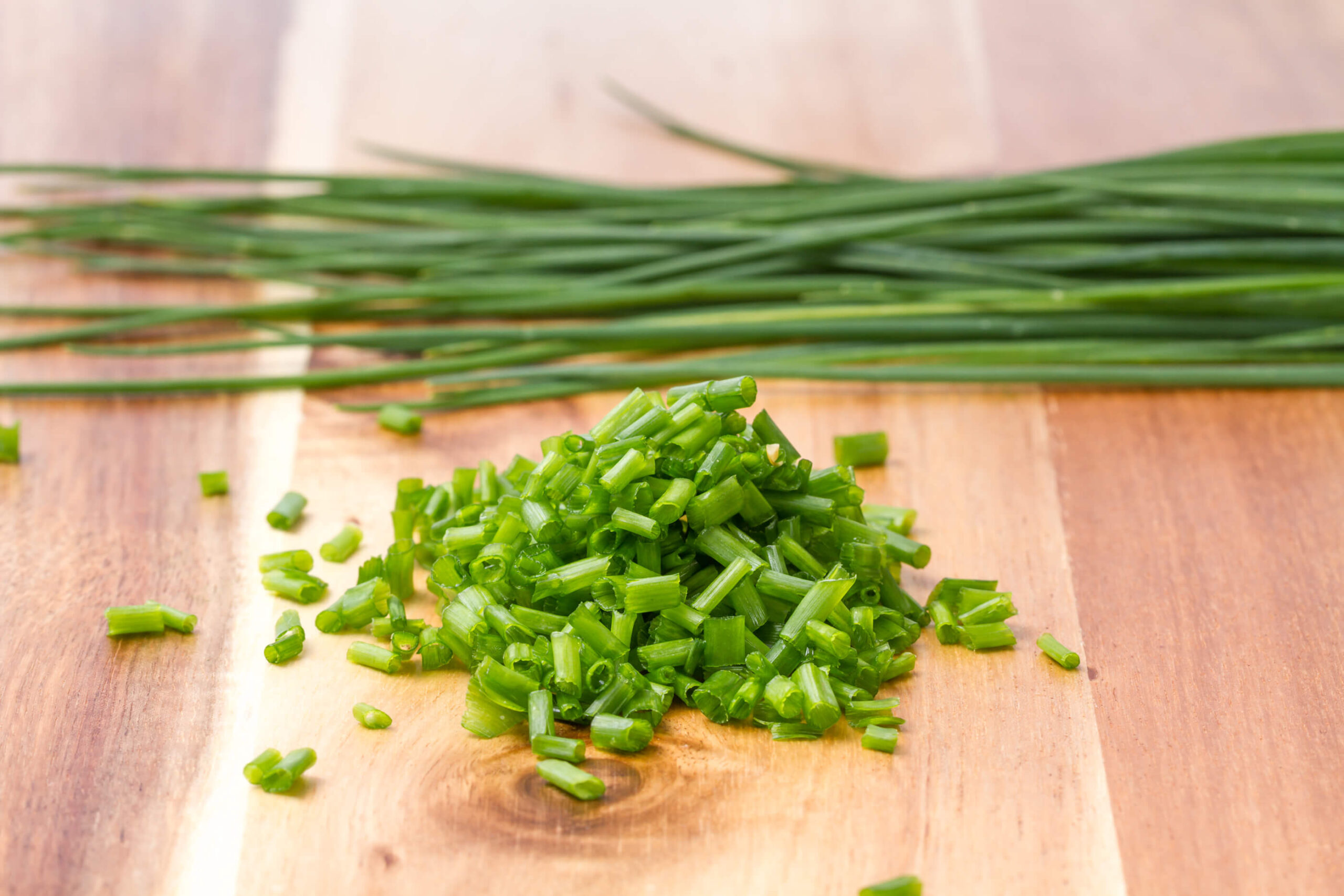
Quick Facts:
- Flavors: Mild onions with hints of garlic, but without the harshness.
- Preparation: Thinly chop and top off your favorite dishes.
- Tastes best in:
- Mashed potatoes
- Eggs or quiché
- Herby chive butter
10. Bay Leaves
Bay leaves have a complex flavor profile. They’re most commonly used in liquid-based dishes like soups, stews, sauces, or stocks to infuse depth of flavor and balance out richness with their bitter bite.
These fresh cooking herbs can be added to your recipe whole or ground. But if you’re using them whole, be sure to remove them before serving so they don’t disrupt your eating experience!
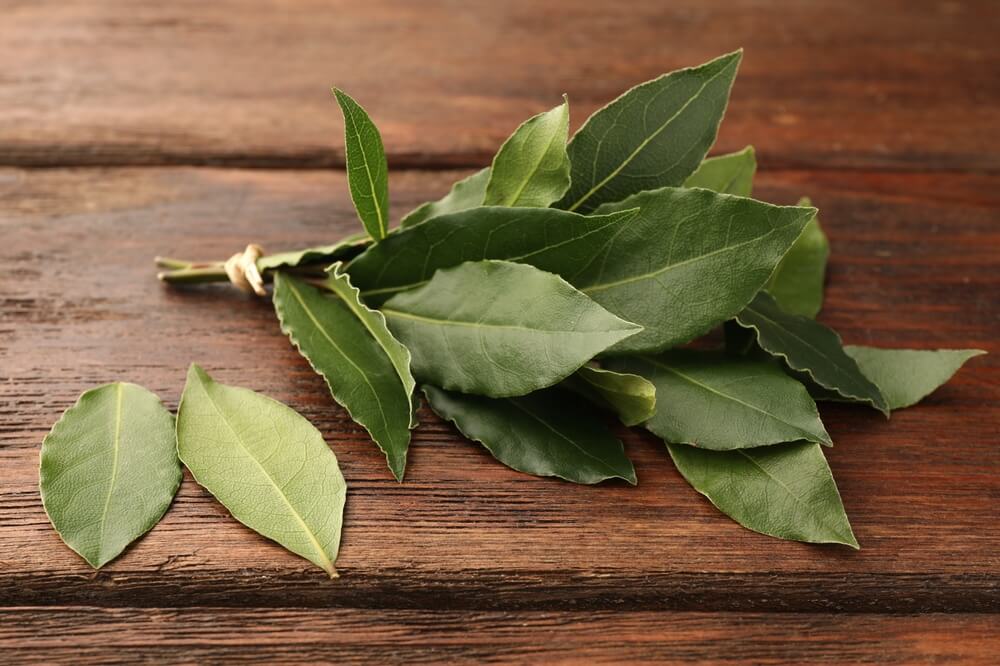
Quick Facts:
- Flavors: Pungent, bitter, and earthy.
- Preparation: Whole or ground.
- Tastes best in:
- Soups and stews
- Broths and stocks
- Homemade marinara
Washing Fresh Herbs
Before using your herbs, it’s important to take the time to thoroughly clean them to remove any dirt or contaminants. Start by removing any damaged or discolored stems and leaves. Next, place the remaining herbs in a container of cold water and gently stir. Finally, remove them from the water and gently pat dry with a paper towel before storing in the refrigerator.
Storing Fresh Herbs
After you’ve thoroughly washed your herbs, it’s time to store them. Follow these steps to ensure Whether you buy your fresh herbs at your local farmers market or grow your own, you want to keep them at the peak of freshness. Follow these steps to store your fresh herbs:
- Snip the ends of the stems.
- From there, you have two storage options:
- Place your herbs in a glass or jar filled with cold water. Cover with a plastic bag and secure it with a rubber band. Depending on your herbs, you can store them on the countertop or in the fridge.
- Wrap the stems in a damp paper towel and place the plants in a Ziplock bag. Don’t fully seal the bag; most fresh herbs store best with a little fresh air. Place them in the warmest part of your fridge, which is usually the door or top shelves.
When stored properly, most of these herbs can last anywhere from 1 – 3 weeks in the refrigerator.
Freezing Fresh Herbs
If you’re looking to extend the life of your favorite cooking herbs even further, try freezing them. Here are three methods of freezing fresh herbs:
- Freeze on the stem — Hardy herbs like rosemary, dill, thyme, or sage can be frozen right on the stem and stored in an airtight container. Spread them out on a baking sheet or plate and place them into the freezer for a few hours. Once they are frozen, move them into an airtight container.
- Freeze in water — This method is best for tender herbs like mint, parsley, and cilantro. Remove the leaves from stems to use whole or chop. Pack them into an ice cube tray, and add just enough water to cover them. Place the tray in the freezer. Once frozen, they can be stored in a Ziplock bag or other airtight container. Then, when you’re ready to use them, you can toss the “herb cube” right into the pot to melt and release its flavor.
- Freeze in oil — Another good method for preserving basil, oregano, and thyme is freezing them in olive oil. To start, remove the leaves from the stems. Combine 1 cup of herbs with 1/2 cup of olive oil in a food processor or blender. Once blended, pour into ice cube trays and place in the freezer. Once frozen they can be stored in a Ziplock bag or some other airtight container. Add the individual cubes to your recipes as needed.
*If you don’t have a blender or food processor on hand, simply add your fresh herbs to the ice cube tray and cover with the oil. Freeze and then remove them to store them in a sealed container.
For even more tips, check out our blog of tips and tricks for storing and preserving fresh herbs.
This blog was originally published on August 8, 2019. It was updated on September 5, 2024.




